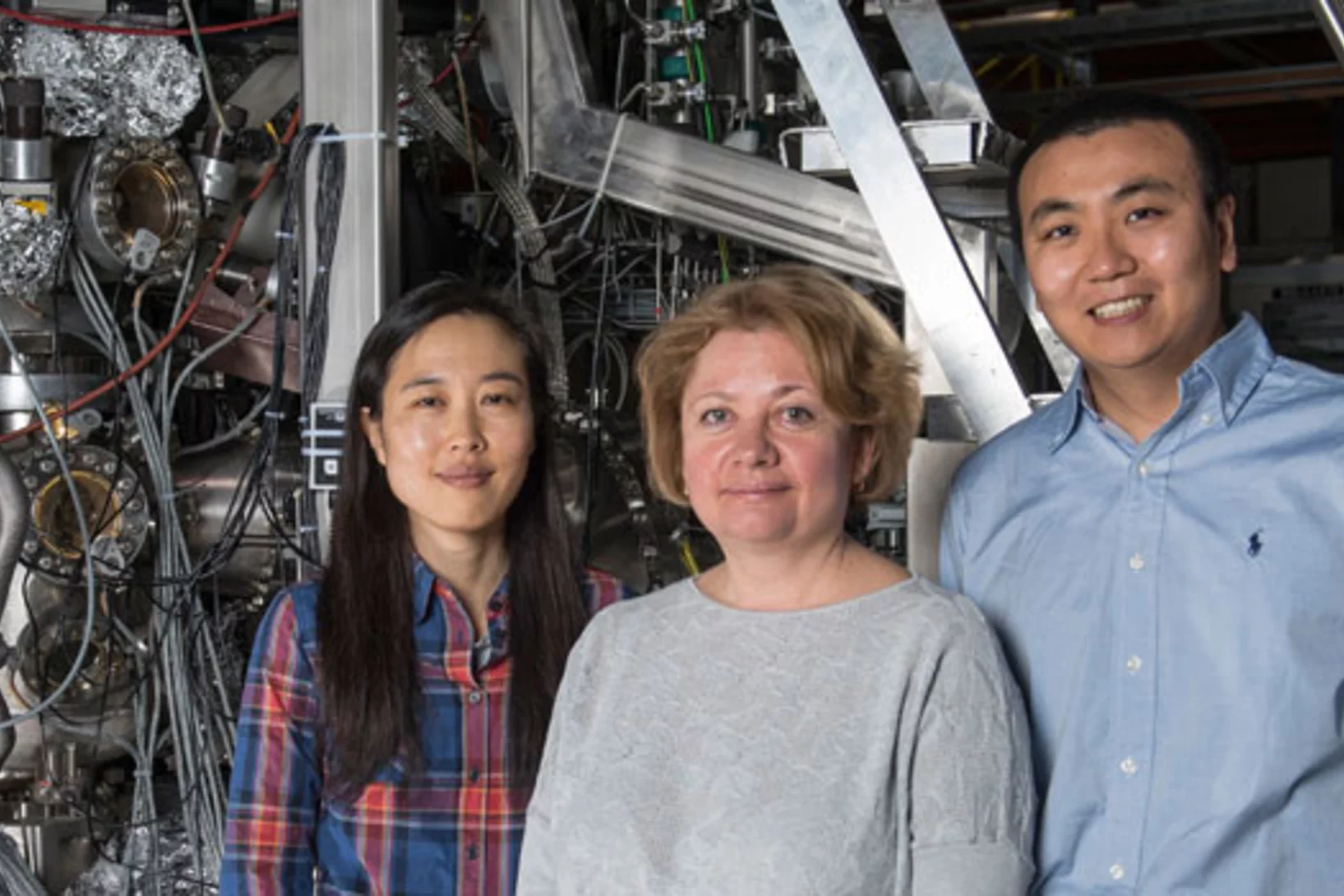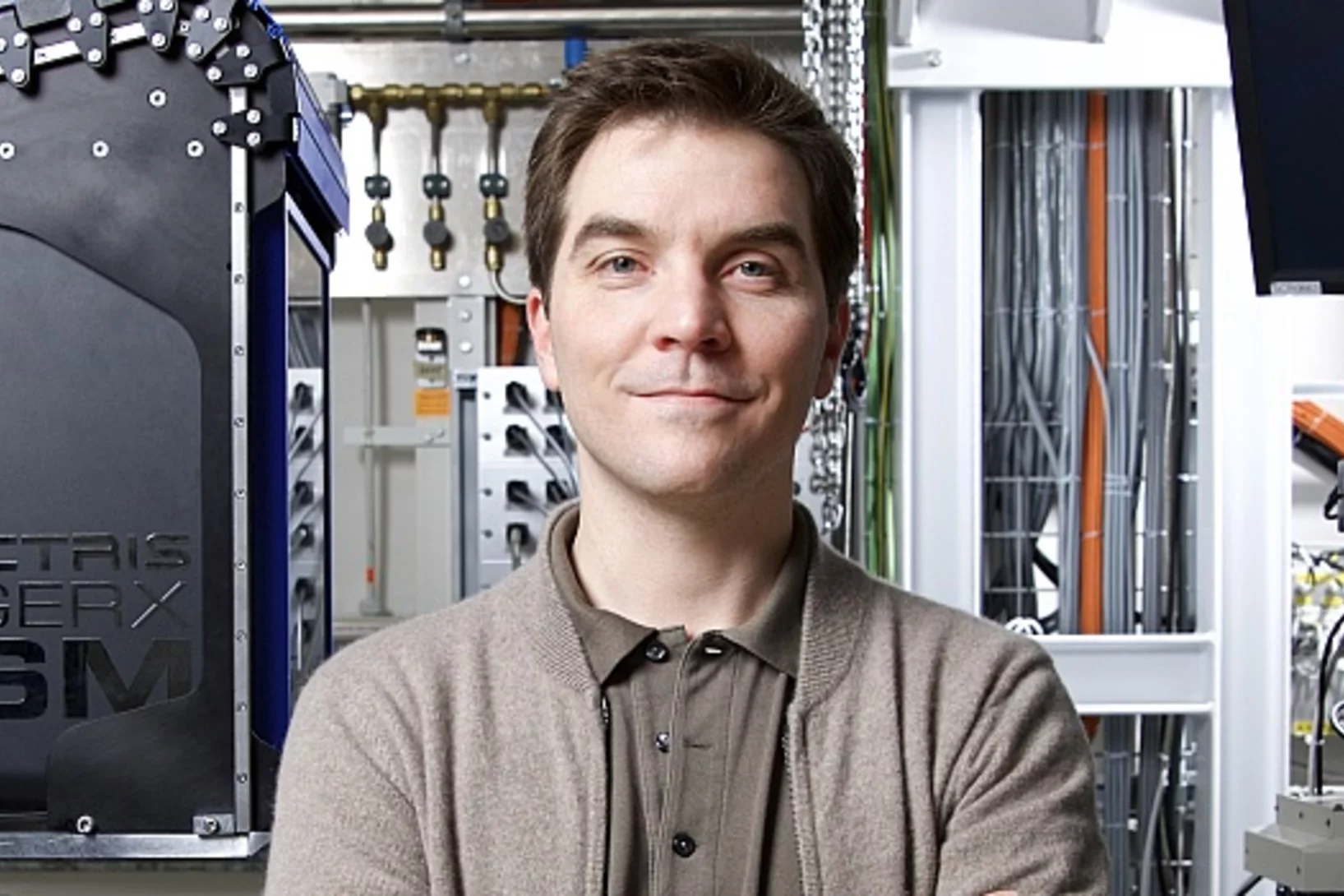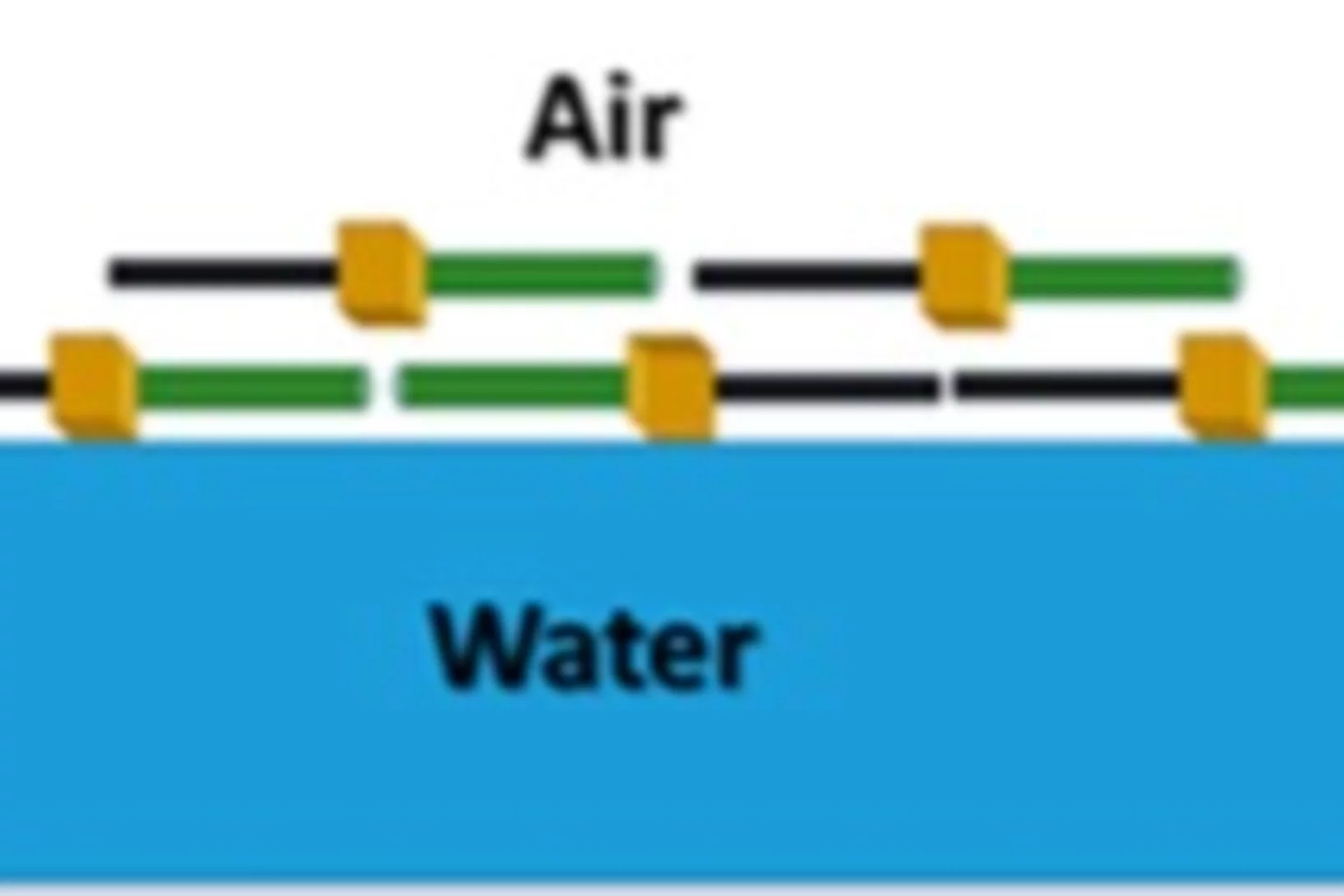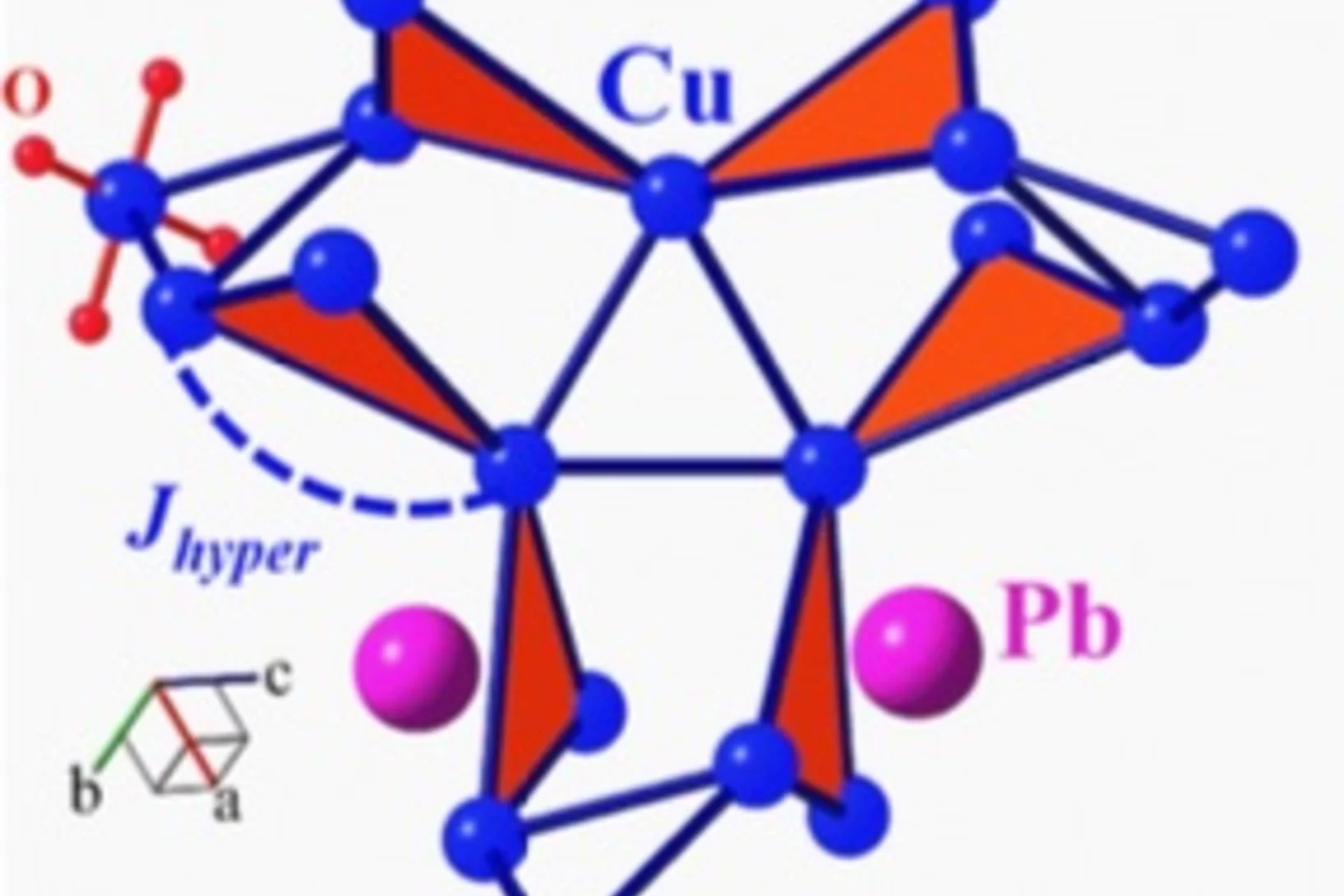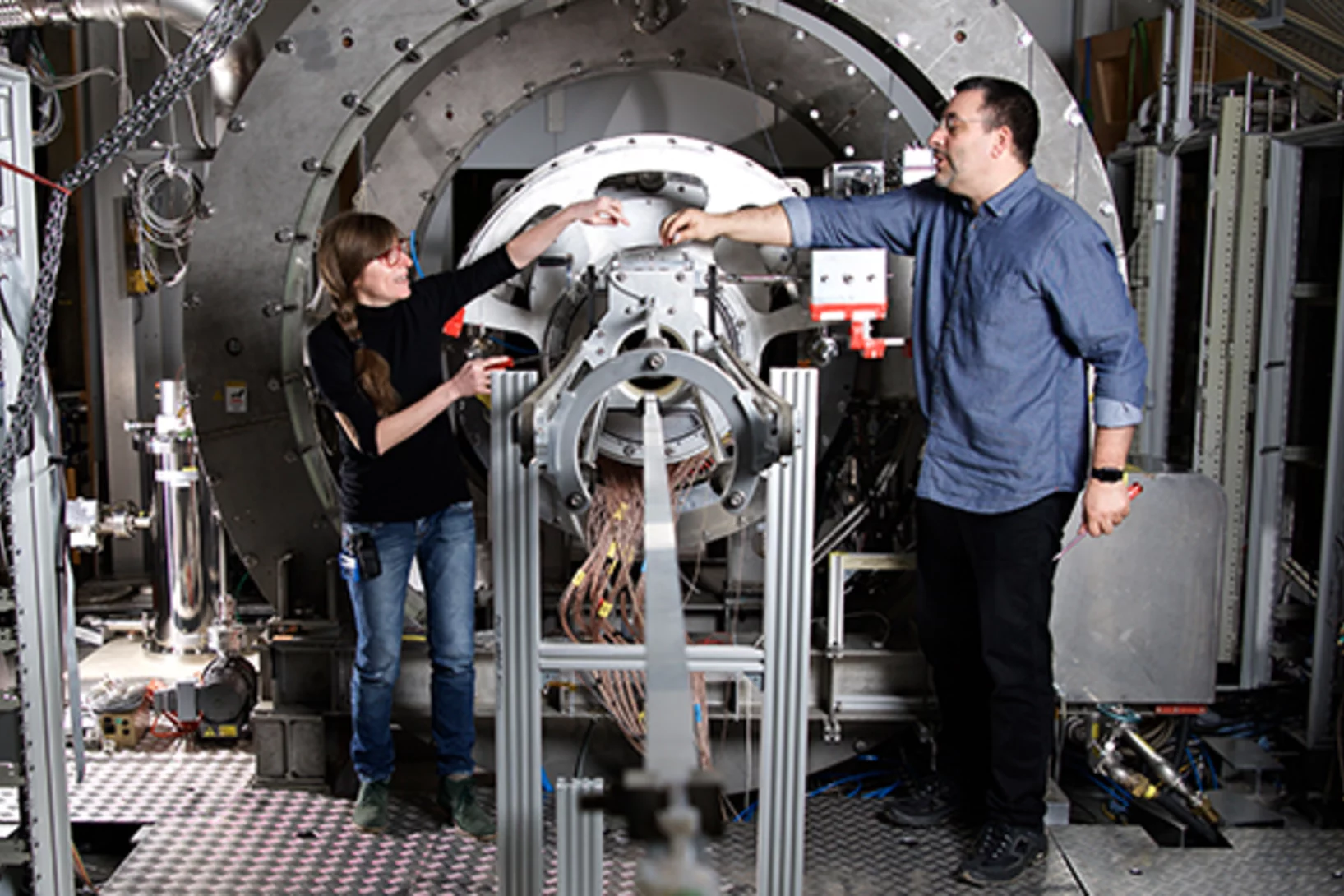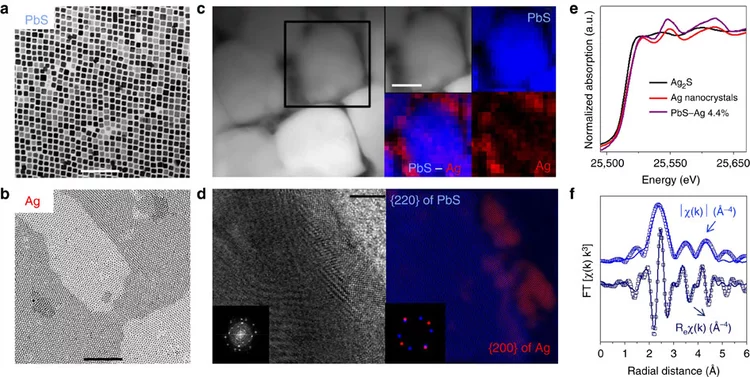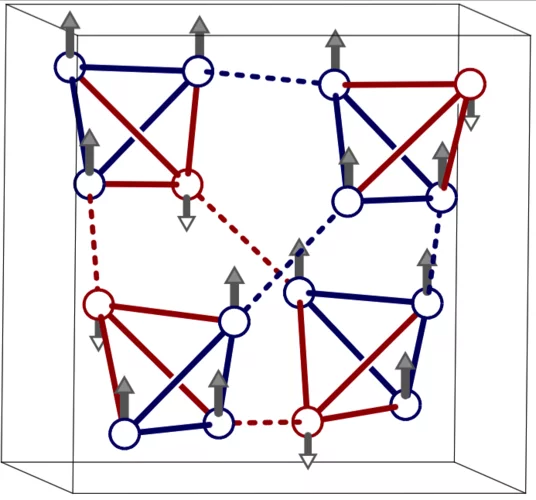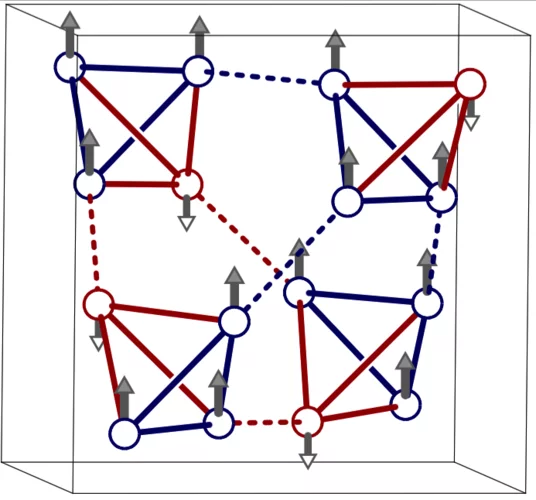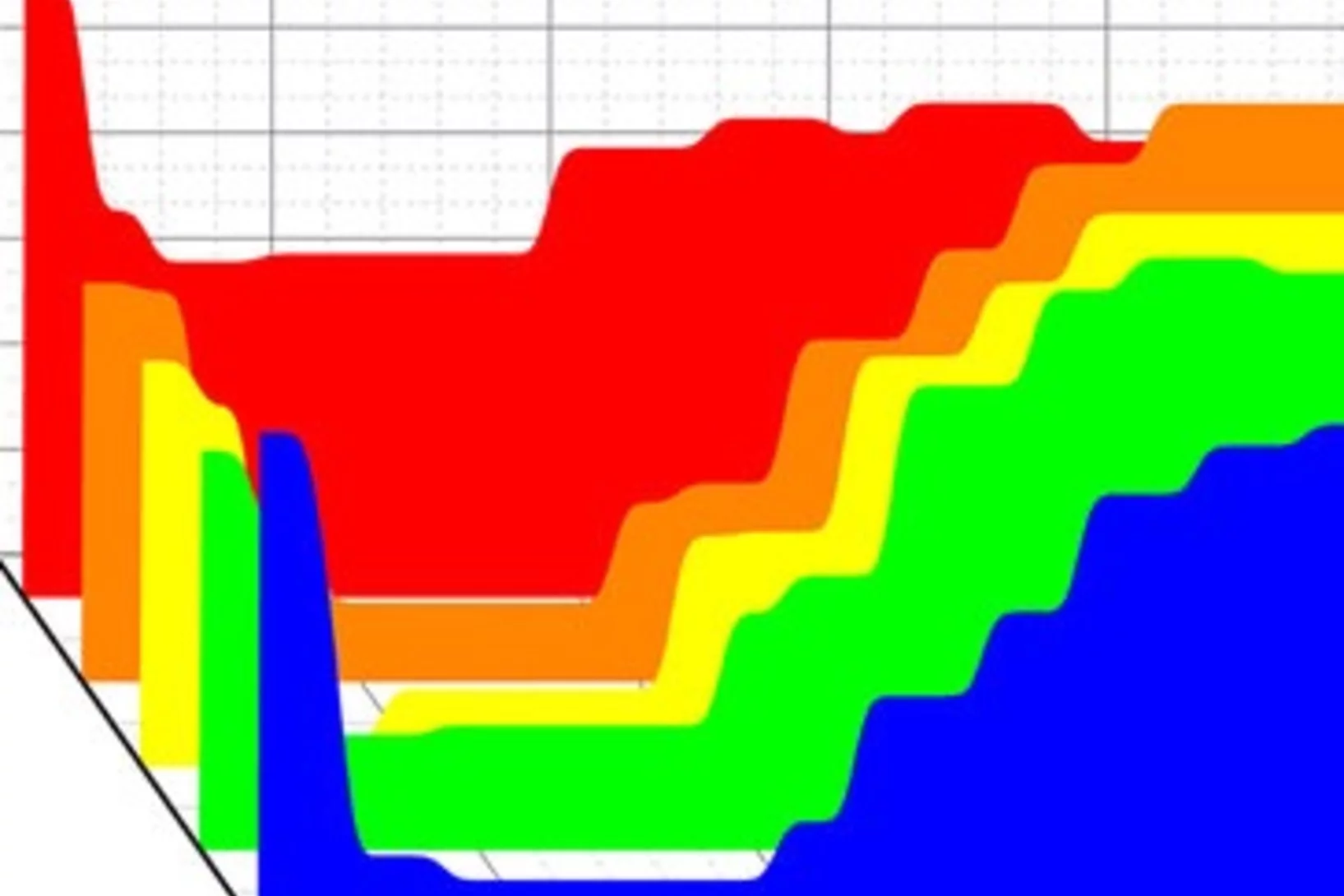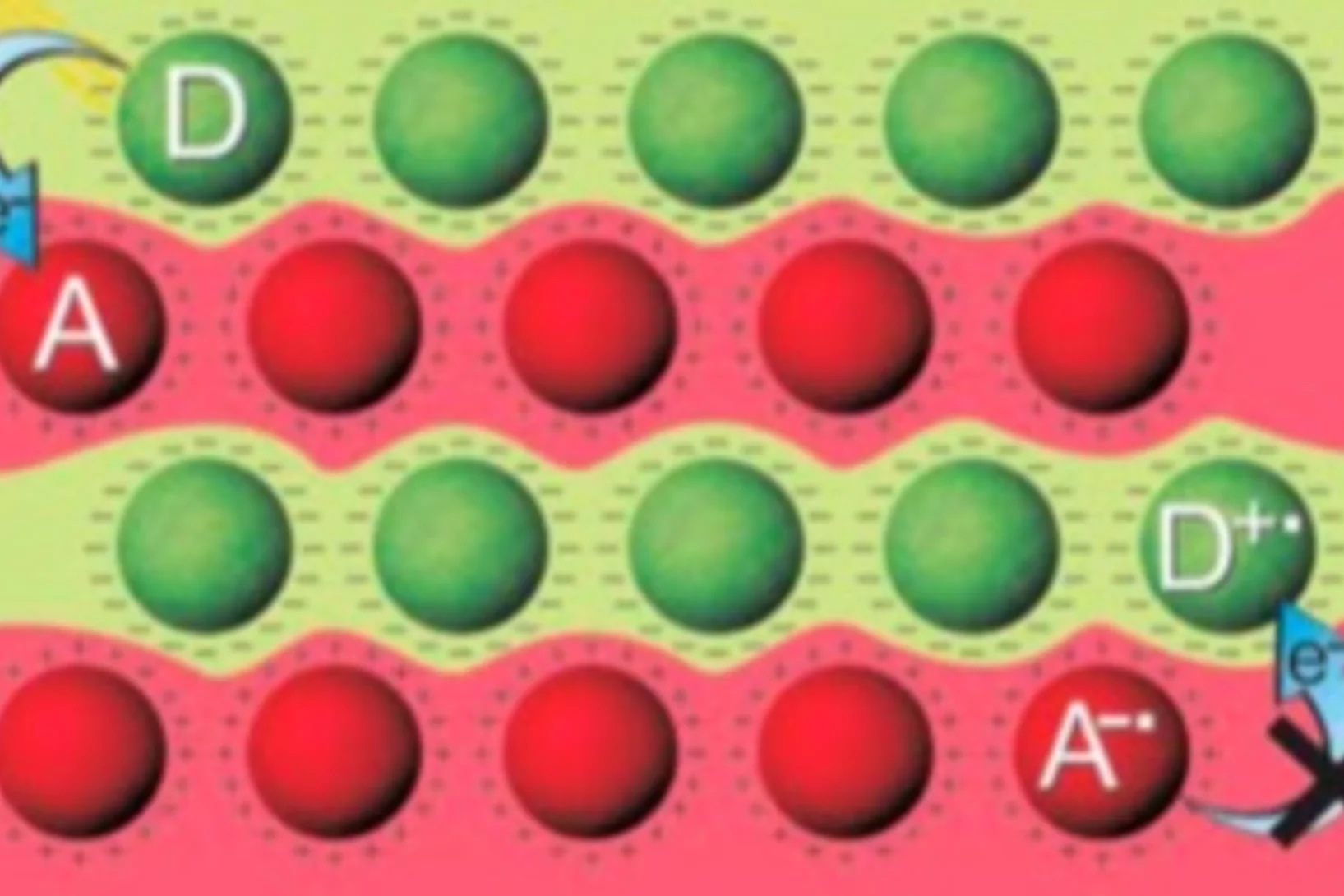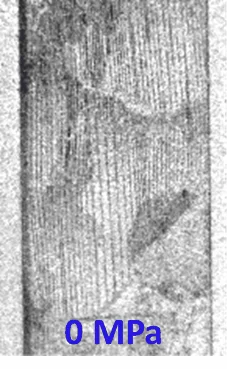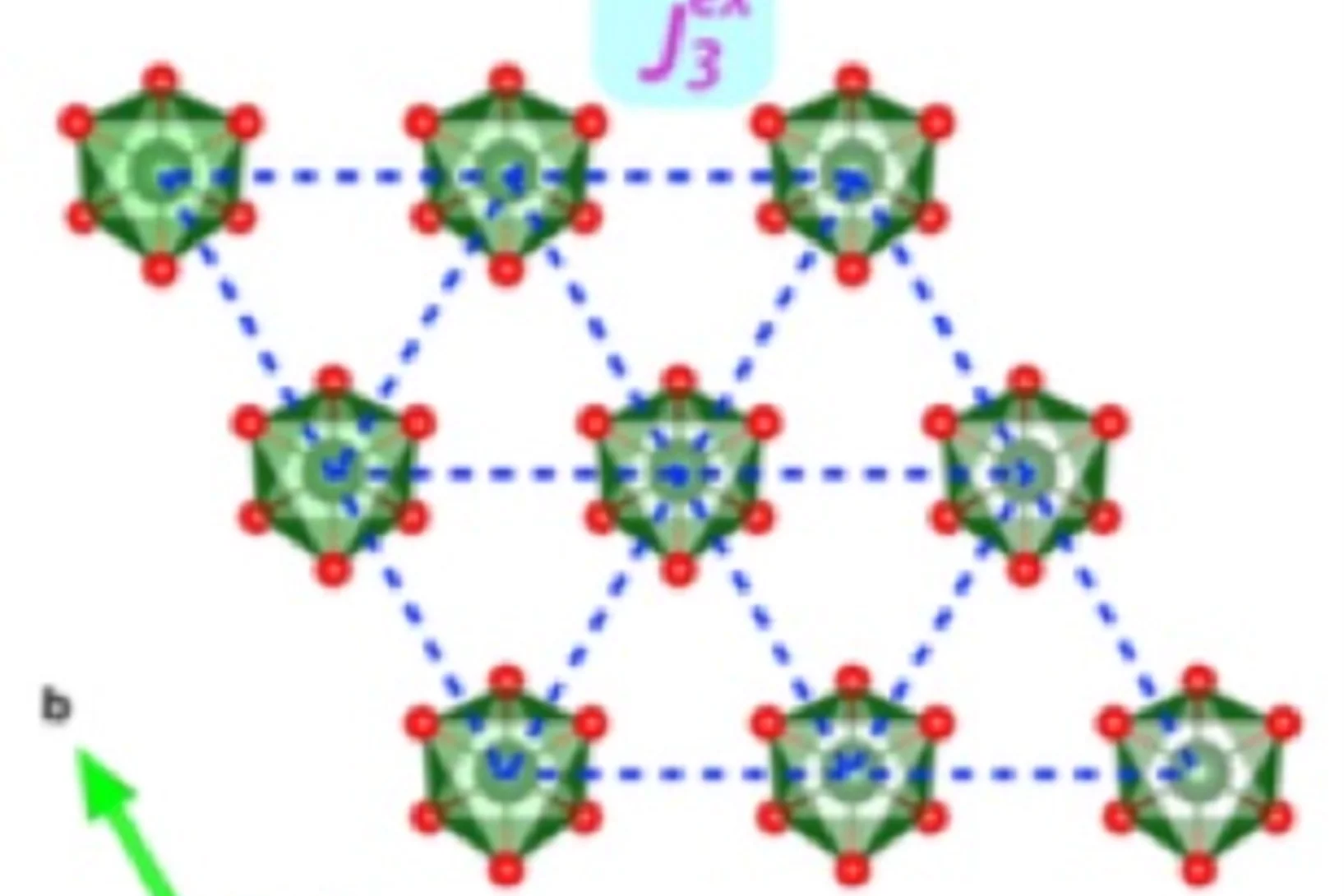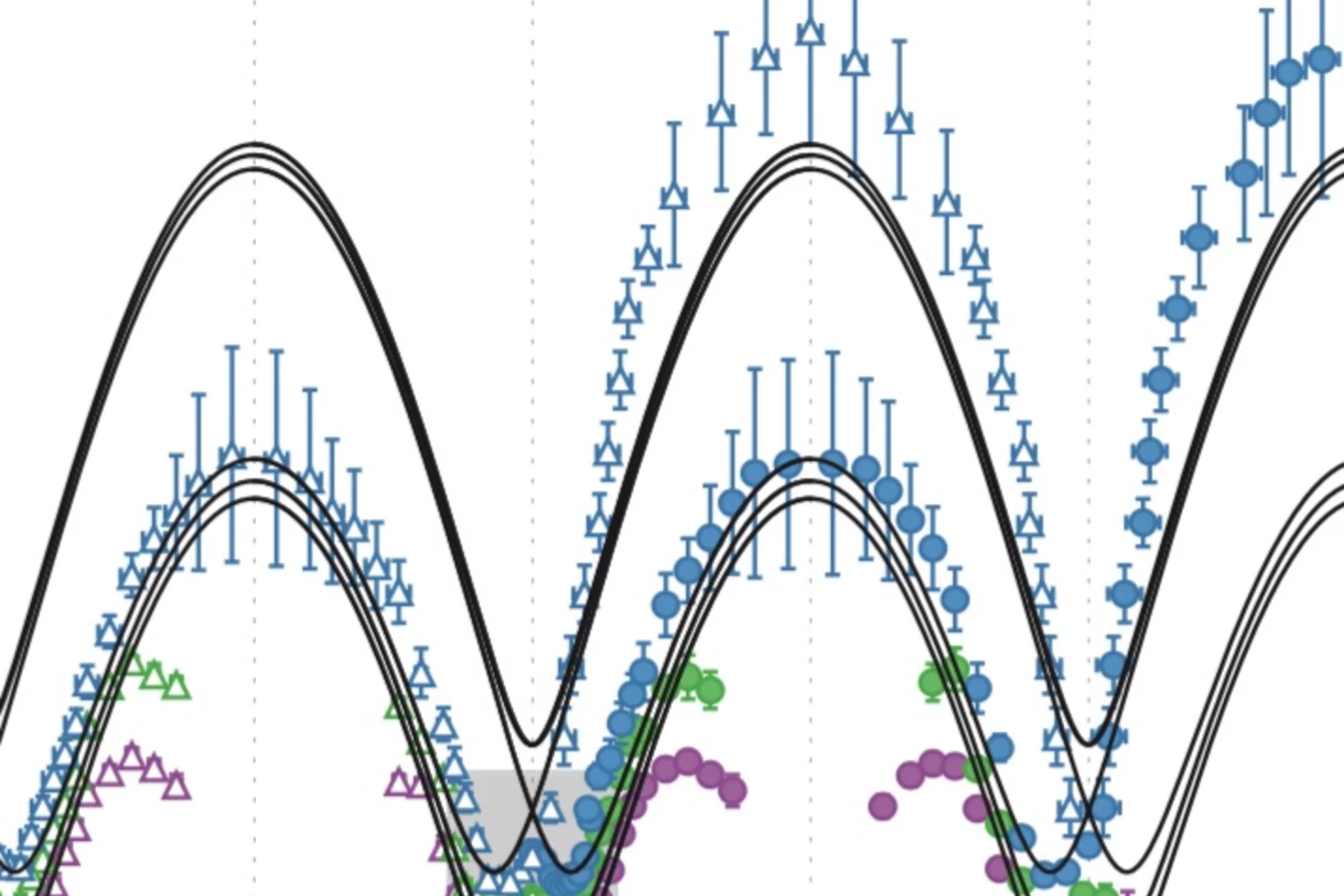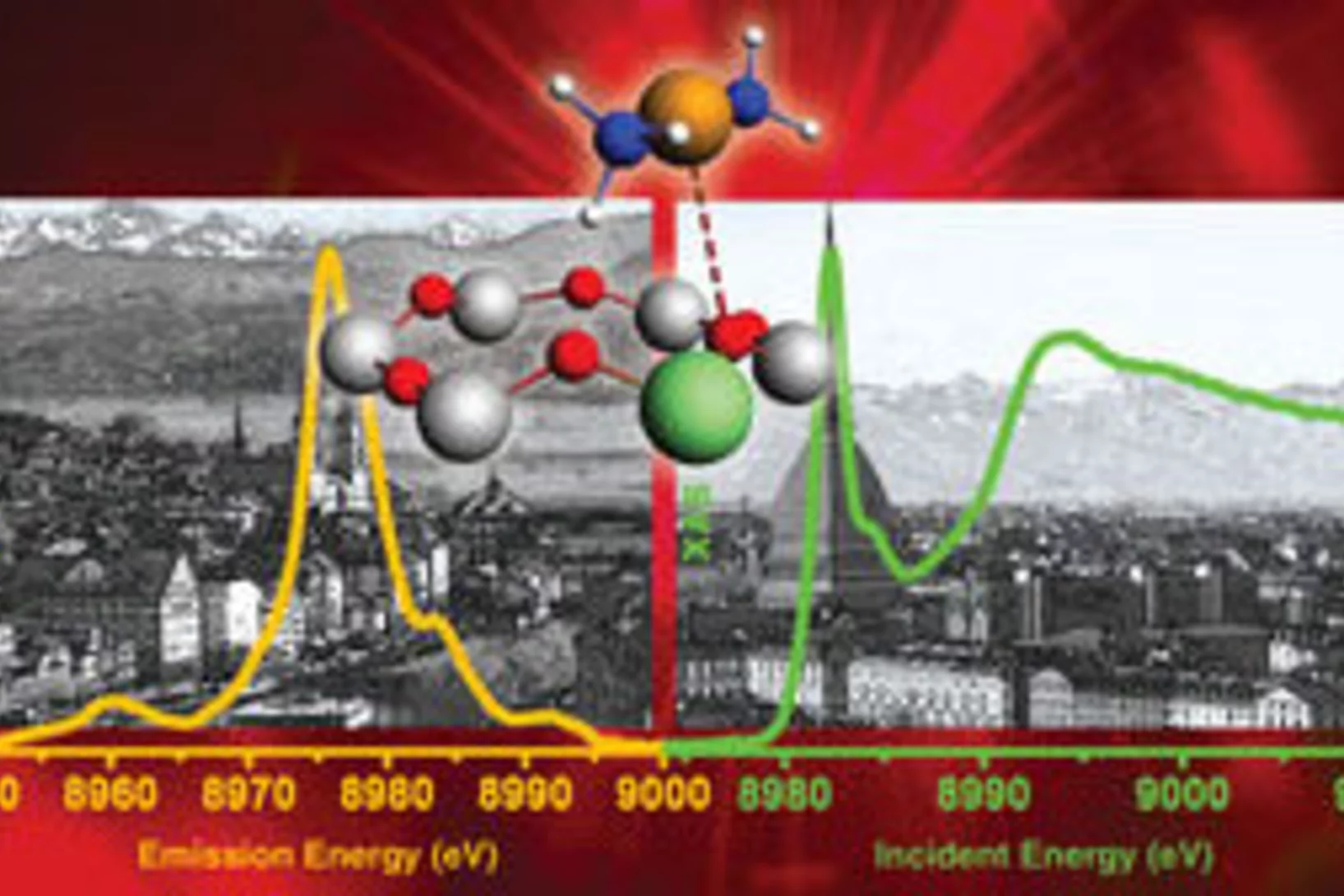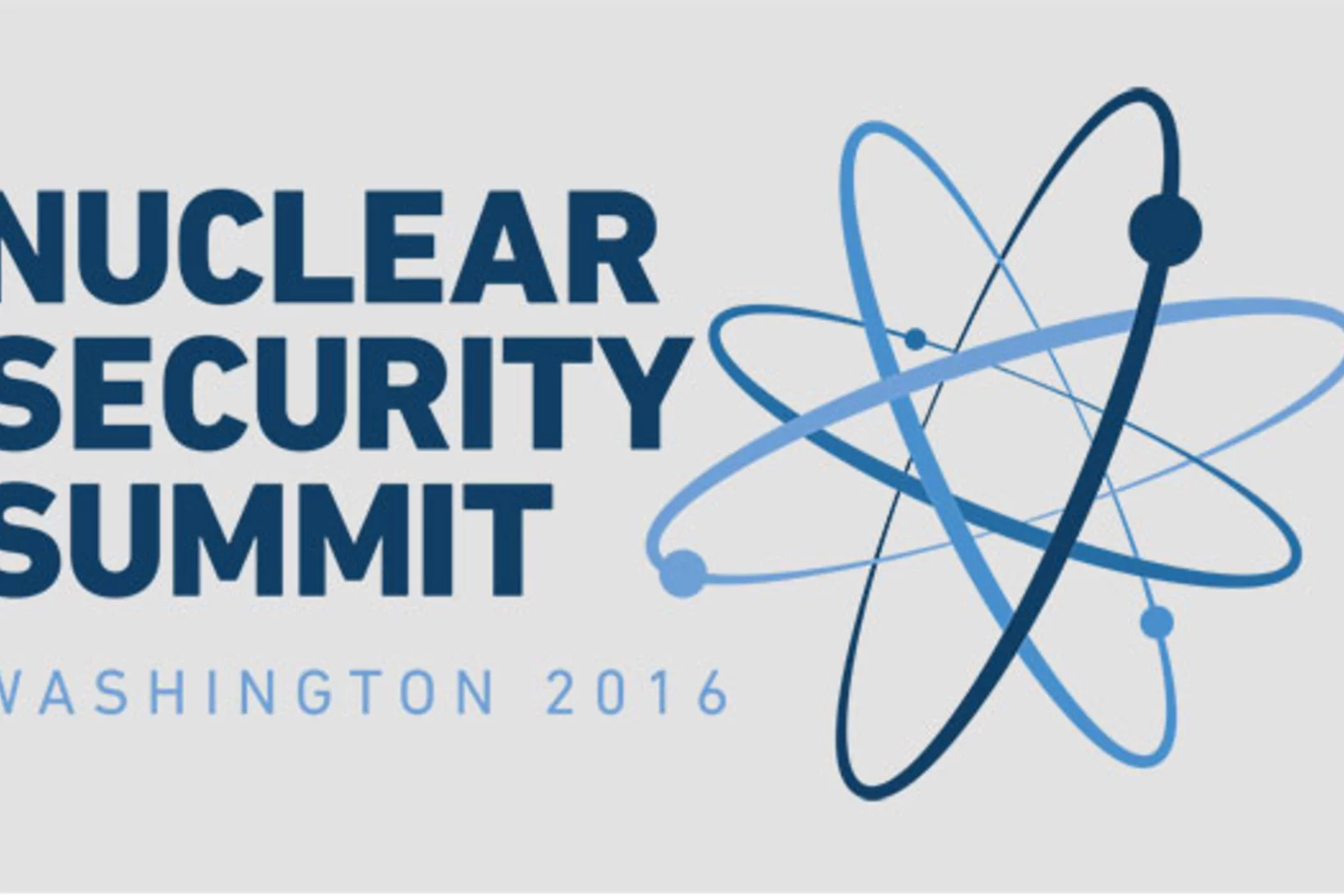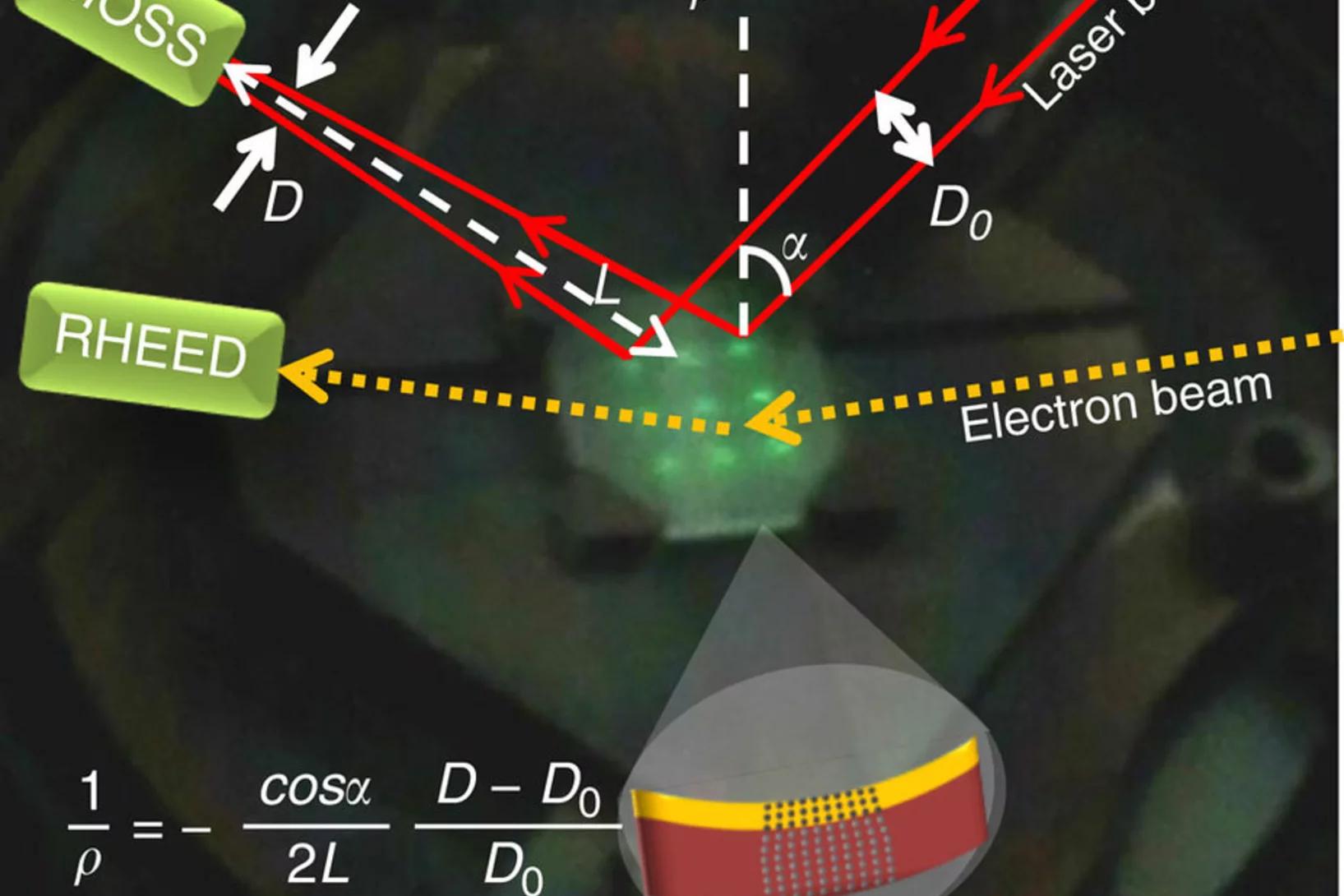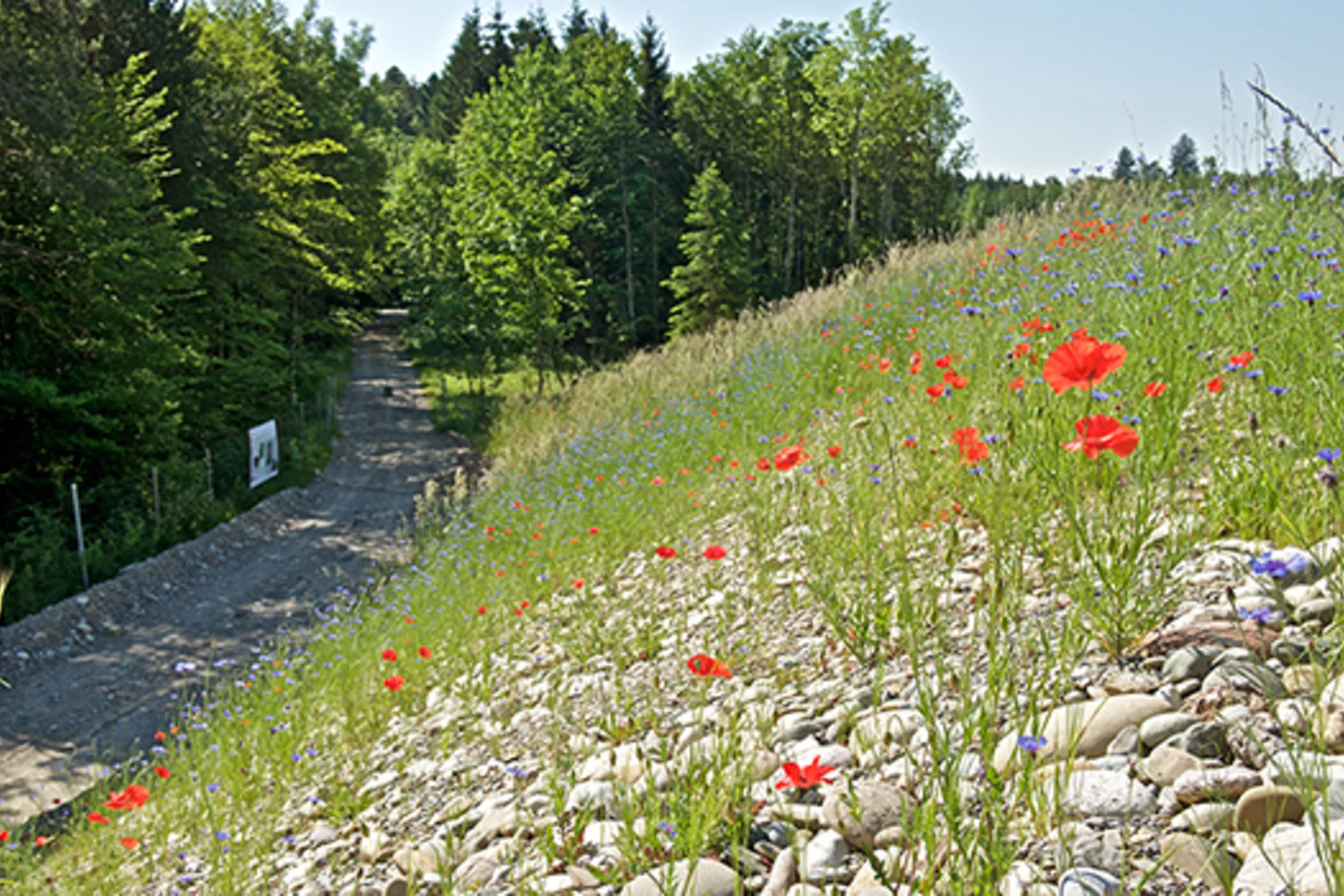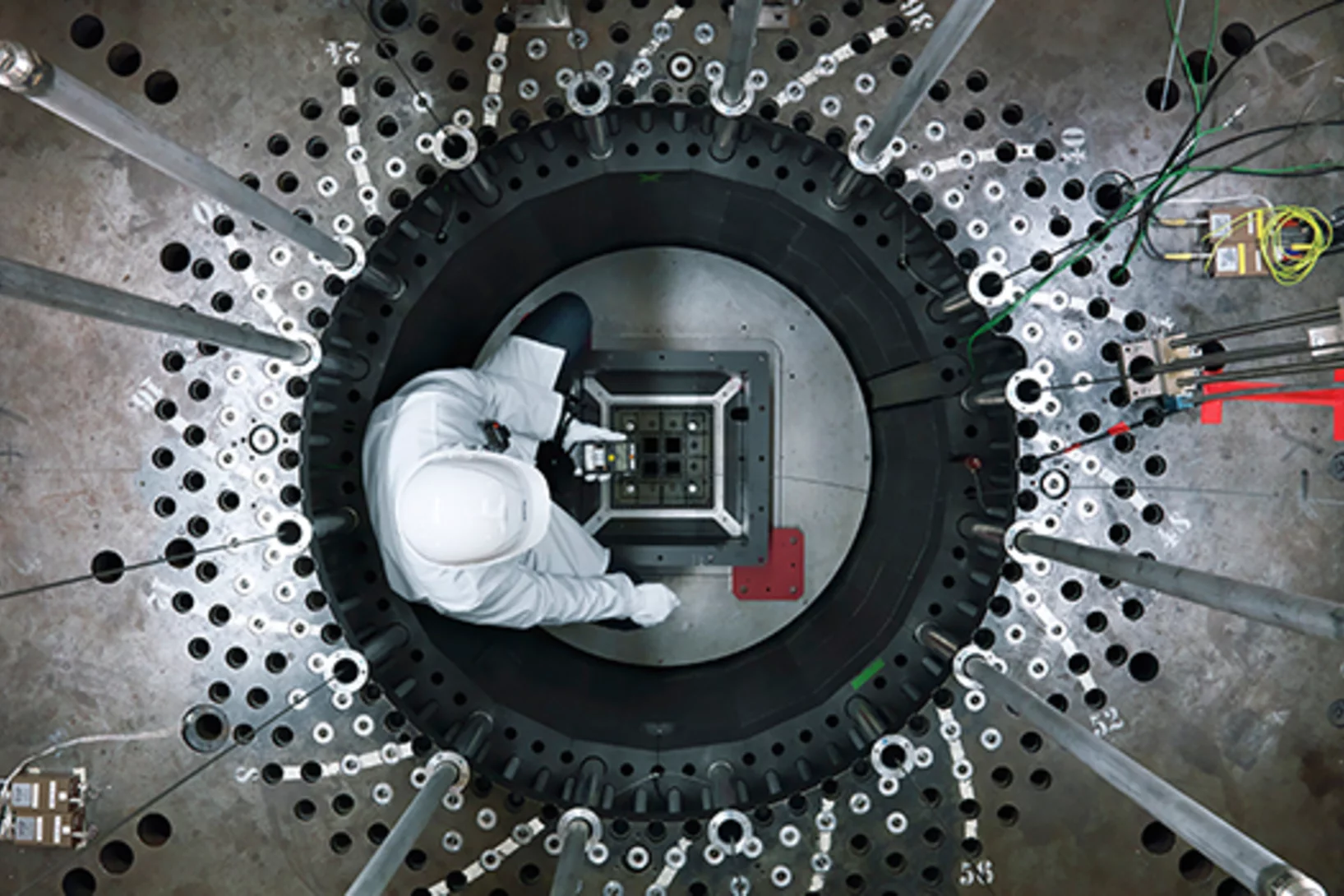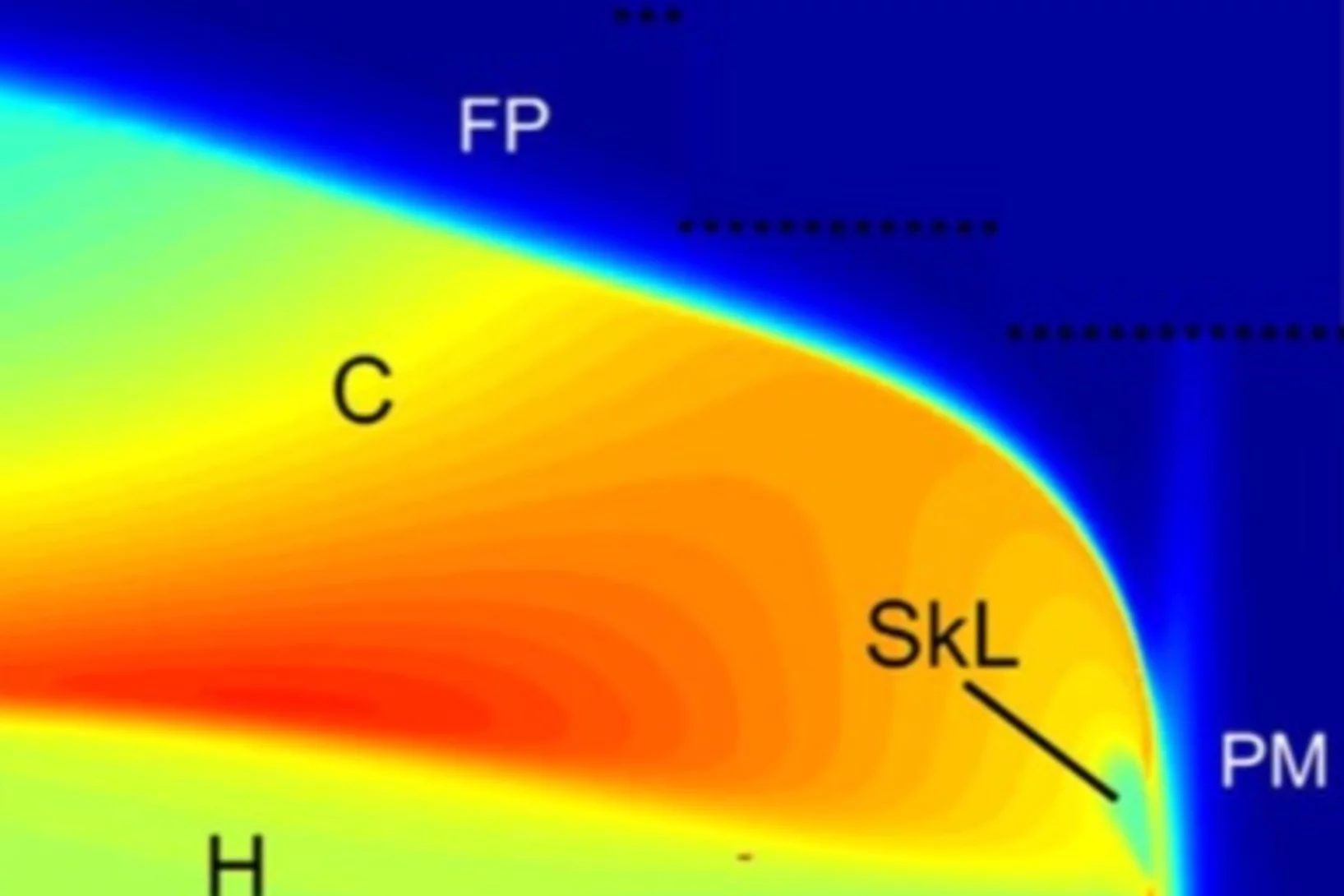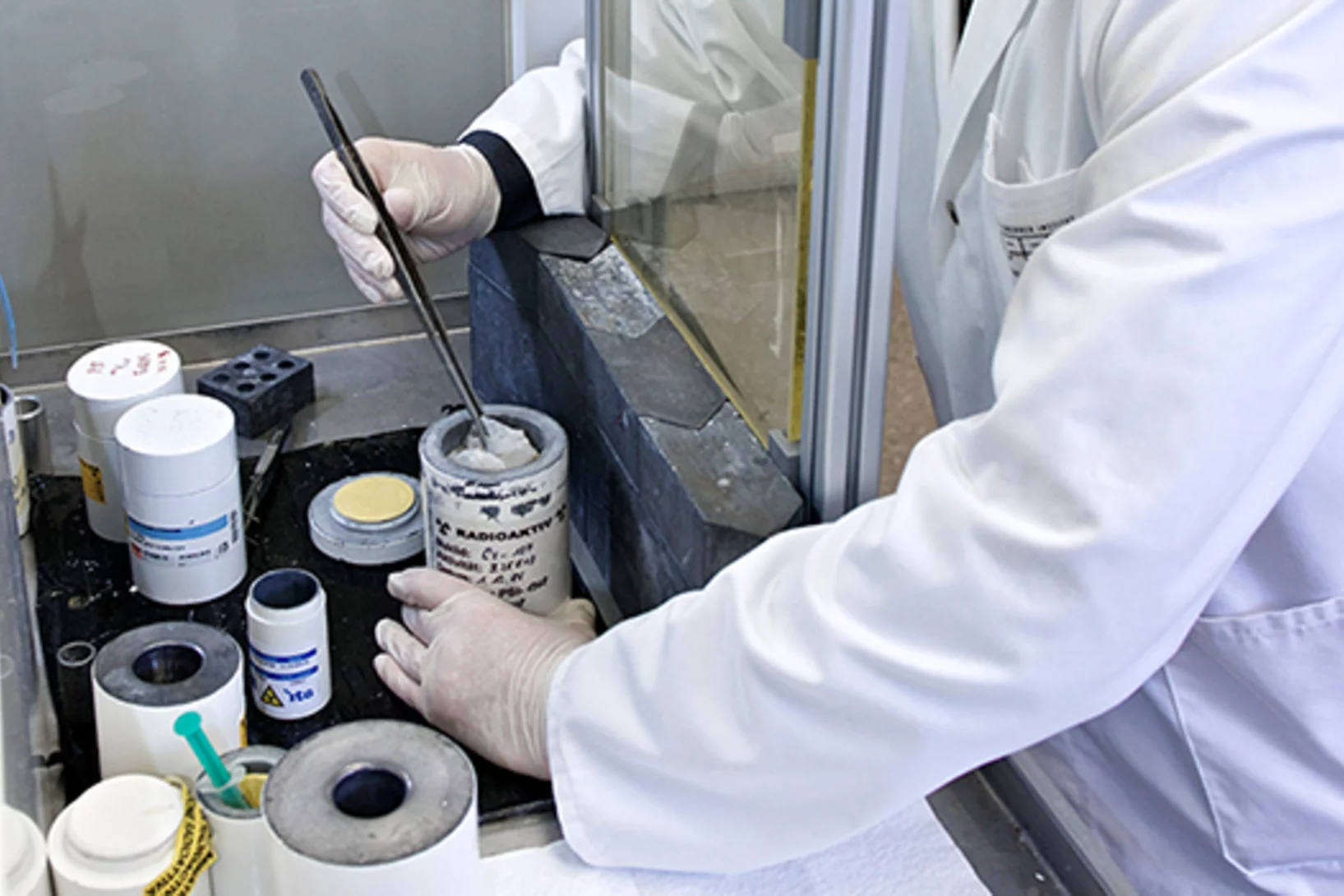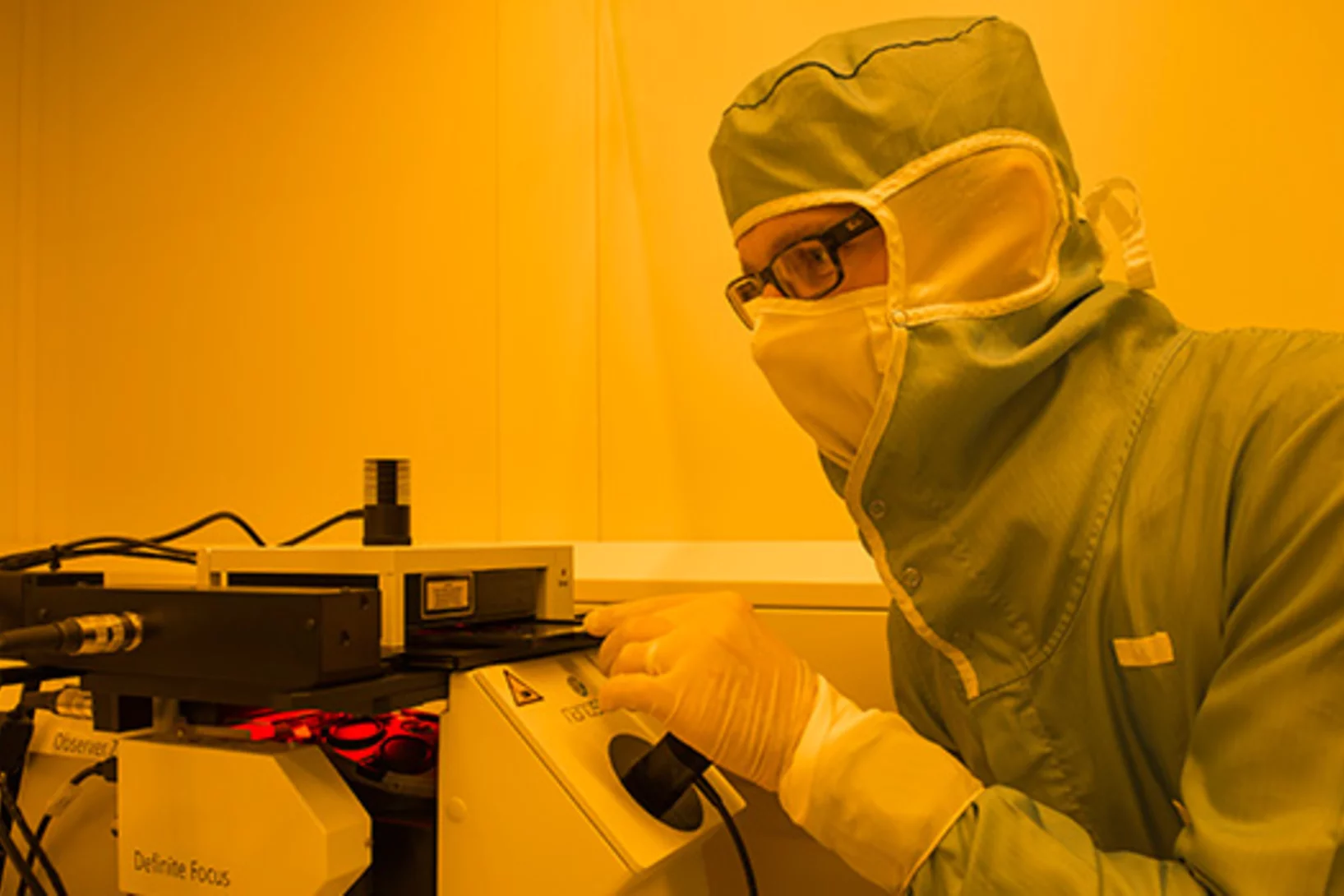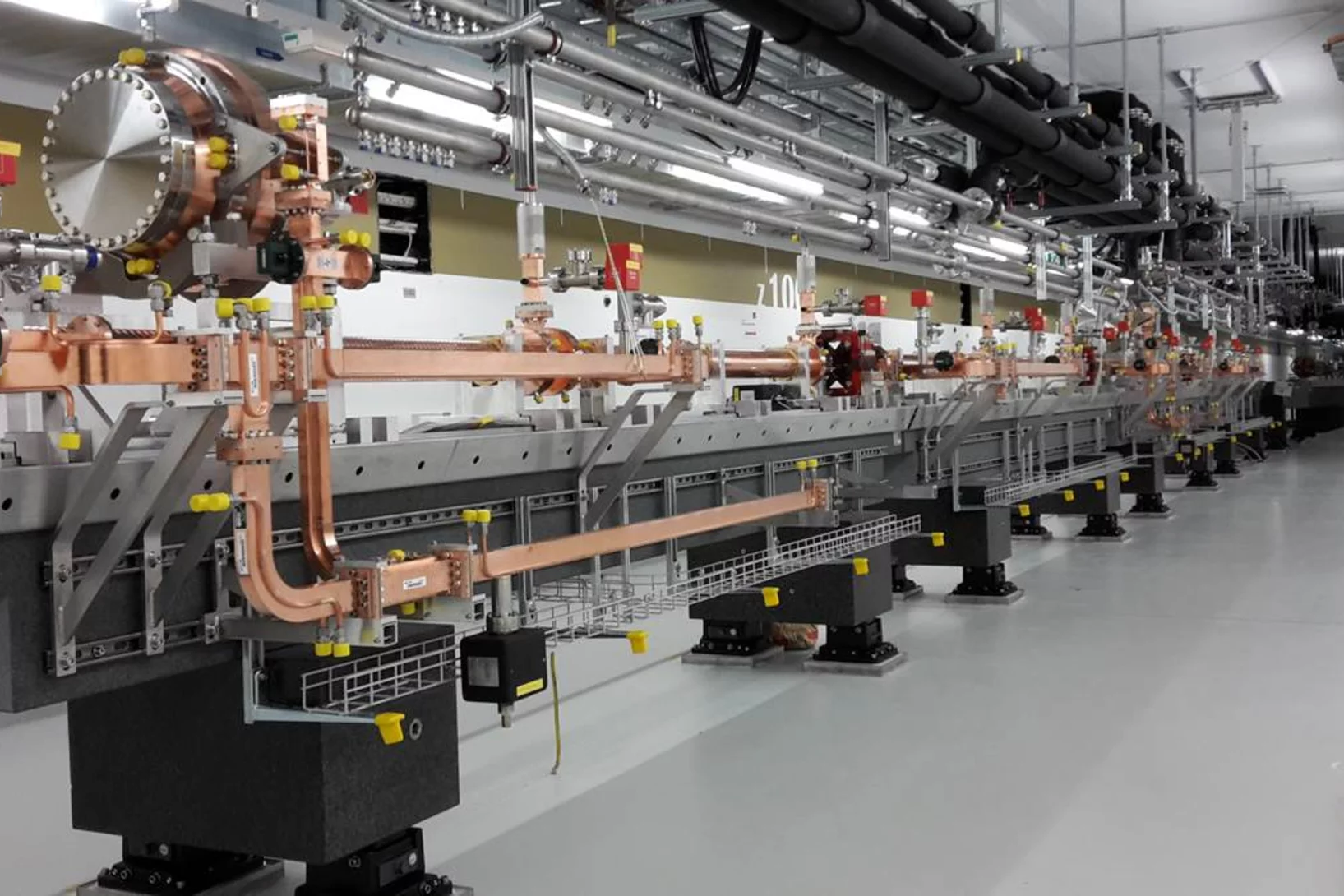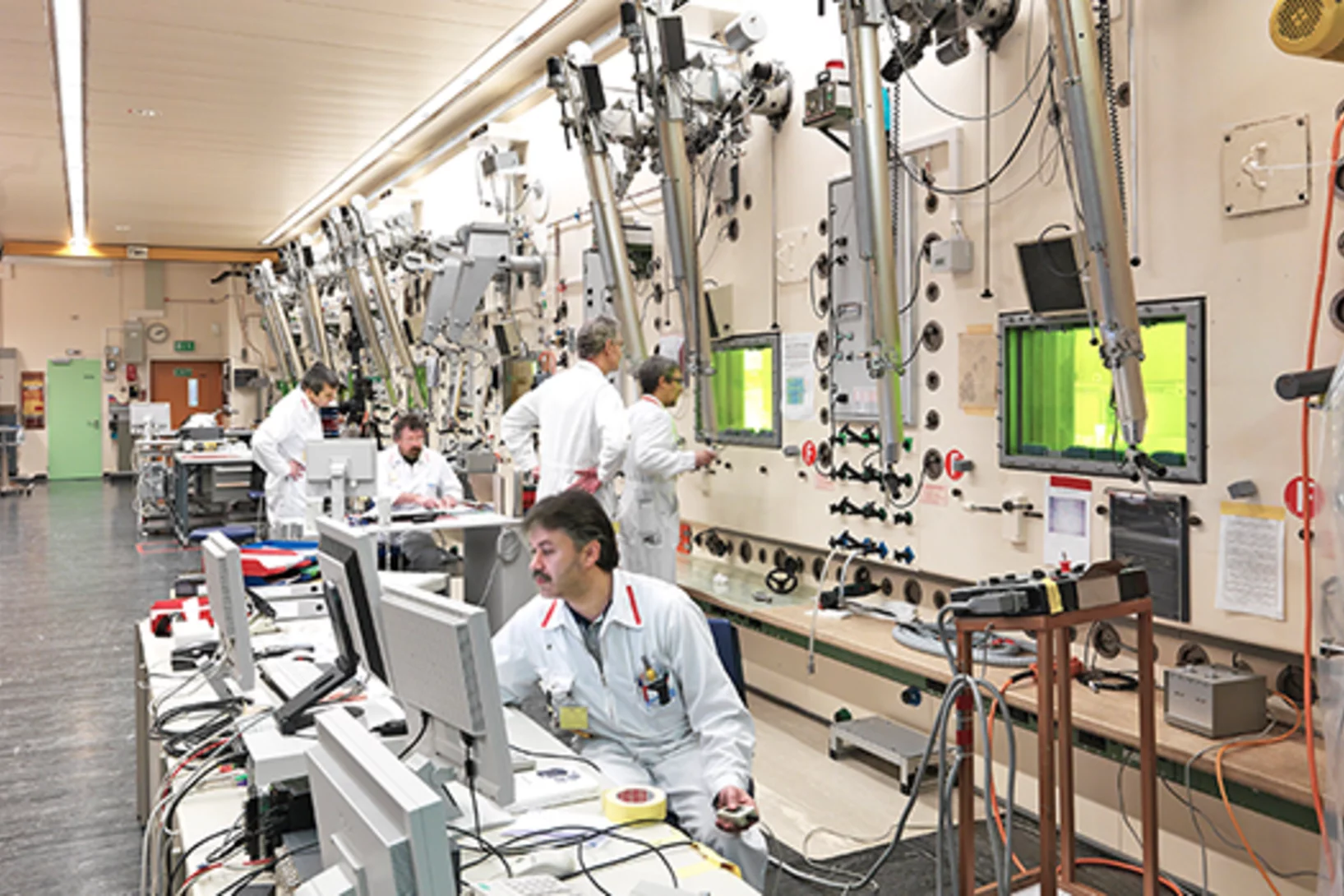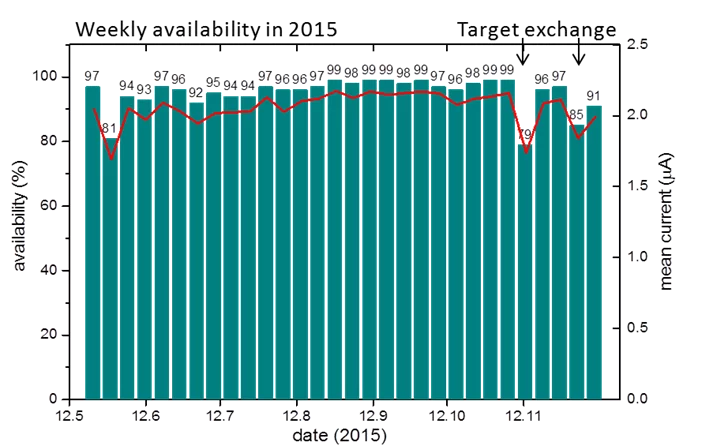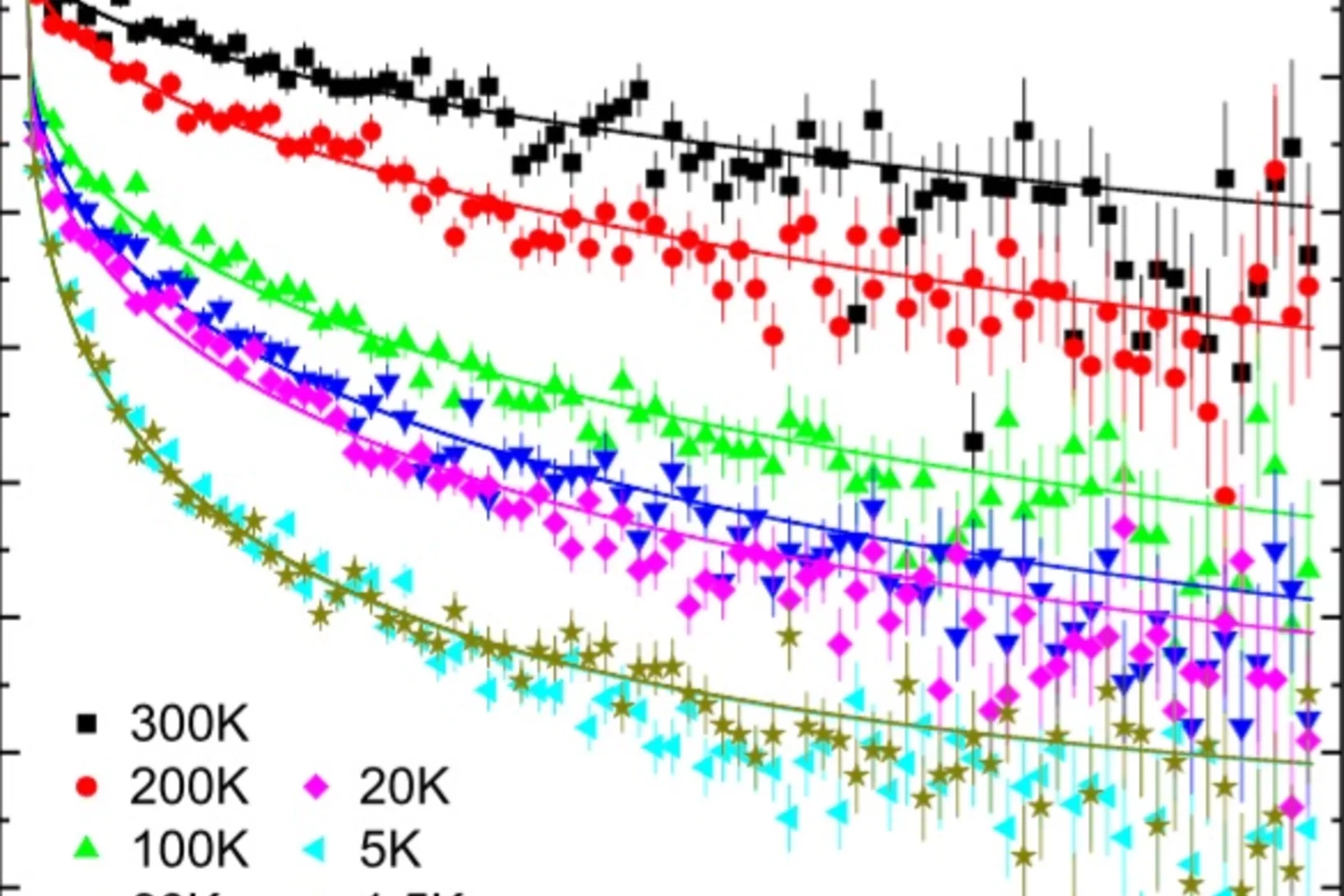A l’Institut Paul Scherrer, les scientifiques cherchent des réponses à la question essentielle des structures élémentaires de la matière et des principes fondamentaux de fonctionnement dans la nature. Ils étudient la structure et les propriétés des particules élémentaires – les plus petits composants de la matière – ou se penchent sur la question de savoir comment les molécules biologiques sont structurées et remplissent leur fonction. Les connaissances qu’ils acquièrent de la sorte ouvrent de nouvelles pistes de solution en sciences, en médecine ou dans le domaine des technologies.
Pour en savoir plus, reportez-vous à Aperçu Fondements de la nature
Watching lithium move in battery materials
In order to understand limitations in current battery materials and systematically engineer better ones, it is helpful to be able to directly visualize the lithium dynamics in materials during battery charge and discharge. Researchers at ETH Zurich and Paul Scherrer Institute have demonstrated a way to do this.
Une nouvelle particule qui pourrait servir de base à de l’électronique économe en énergie
Le fermion de Weyl, découvert seulement l’an dernier, se déplace pratiquement sans résistance à l’intérieur de certains matériaux. Des chercheurs montrent à présent une voie possible pour l’utiliser dans des composants électroniques.
Observation of Weyl nodes and Fermi arcs in tantalum phosphide
A Weyl semimetal possesses spin-polarized band-crossings, called Weyl nodes, connected by topological surface arcs. The low-energy excitations near the crossing points behave the same as massless Weyl fermions, leading to exotic properties like chiral anomaly. To have the transport properties dominated by Weyl fermions, Weyl nodes need to locate nearly at the chemical potential and enclosed by pairs of individual Fermi surfaces with non-zero Fermi Chern numbers.
Du boson de Higgs aux nouveaux médicaments
L’entreprise DECTRIS, une spin-off du PSI fondée en 2006 et aujourd’hui très prospère, est un exemple parfait d’apport tangible de la recherche fondamentale à l’économie. Le dernier développement de DECTRIS est un détecteur nommé EIGER, utilisé aux grands instruments de recherche pour réaliser des mesures à l’aide d’un faisceau de rayons X. EIGER contribue aussi à la recherche de nouveaux médicaments.
Towards hybrid pixel detectors for energy-dispersive or soft X-ray photon science
JUNGFRAU (adJUstiNg Gain detector FoR the SwissFEL Aramis User station) is a two dimensional hybrid pixel detector for photon science applications at free electron lasers and synchrotron light sources. The JUNGFRAU 0.4 prototype presented here is specifically geared towards low-noise performance and hence soft X-ray detection. With an extremely low noise of less than 30 electrons it enters a field formally reserved for SSD’s and CMOS imagers allowing single photon resolution down to a photon energy of 500eV.
Semifluorinated Alkanes at the Air–Water Interface: Tailoring Structure and Rheology at the Molecular Scale
Semifluorinated alkanes form monolayers with interesting properties at the air–water interface due to their pronounced amphi-solvophobic nature and the stiffness of the fluorocarbons. In the present work, using a combination of structural and dynamic probes, we investigated how small molecular changes can be used to control the properties of such an interface, in particular its organization, rheology, and reversibility during compression–expansion cycles.
PSI-Feriencamp 2016
Suchen Sie für Ihr Kind ein spannendes Angebot während den Sommerferien? Möchten Sie in ihm die Neugier und Begeisterung für naturwissenschaftlich-technische Themen wecken? Die Berufsbildung und das Komitee für Chancengleichheit führt dieses Jahr zum achten Mal das PSI-Feriencamp durch!
Spin Liquid State in the 3D Frustrated Antiferromagnet PbCuTe2O6: NMR and Muon Spin Relaxation Studies
PbCuTe2O6 is a rare example of a spin liquid candidate featuring a three-dimensional magnetic lattice. Strong geometric frustration arises from the dominant antiferromagnetic interaction that generates a hyperkagome network of Cu2+ ions although additional interactions enhance the magnetic lattice connectivity.
500 000 fois moins probable que de gagner au loto
La rareté d’une désintégration de particules a été mesuréeDans le cadre de l’expérience MEG, des chercheurs du PSI sont à la recherche d’une voie de désintégration extrêmement rare de certaines particules élémentaires appelées muons. Pour être plus précis, ils chiffrent cette improbabilité. Leur tout dernier résultat: cette désintégration se produit dans moins d’un cas sur 2,4 milliards. Ce résultat permet aux physiciens théoriciens de trier, parmi les hypothèses visant à décrire l’univers, celles qui résistent à la confrontation avec la réalité.
High-performance thermoelectric nanocomposites from nanocrystal building blocks
Using an assembly of colloidal nanocrystals a Ag-PbS nanocomposite was produced with increased thermoelectic figures of merit up to 1.7K at 850 K. EXAFS spectroscopy at the Ag K-edge was essential to show that Ag does not dissolve in PbS nanoparticles but preserved the individual nanodomains. This reduces the PbS intergrain energy barriers for charge transport
Spin excitations in copper selenate, a skyrmion host material
Inelastic neutron scattering measurements performed at EIGER and TASP have mapped the magnetic excitation spectrum along high-symmetry directions of the first Brillouin zone for the magnetic skyrmion host copper selenate, Cu2OSeO3. Most of the observed spectrum is consistent with a recently proposed model for the magnetic excitations in Cu2OSeO3, for which a new set of best-fit dominant exchange parameters has been found.
Spin excitations in copper selenate, a skyrmion host material
G.S. Tucker et al., Physical Review B 93, 054401 (2016). Inelastic neutron scattering measurements performed at EIGER and TASP have mapped the magnetic excitation spectrum along high-symmetry directions of the first Brillouin zone for the magnetic skyrmion host copper selenate, Cu2OSeO3.
Giant Controllable Magnetization Changes Induced by Structural Phase Transitions in a Metamagnetic Artificial Multiferroic
The realization of a controllable metamagnetic transition from AFM to FM ordering would open the door to a plethora of new spintronics based devices that, rather than reorienting spins in a ferromagnet, harness direct control of a materials intrinsic magnetic ordering. In this study FeRh films with drastically reduced transition temperatures and a large magneto-thermal hysteresis were produced for magnetocaloric and spintronics applications.
Stratified Micellar Multilayers - Toward Nanostructured Photoreactors
Polyelectrolyte multilayers (PEMs) with stratification of the internal structure were assembled from statistical amphiphilic copolyelectrolytes of opposite charges. These polyelectrolytes organize in aqueous solutions into micellar structures with fluoroalkyl and aromatic nanodomains, respectively, that were also preserved after deposition as thin films via layer-by-layer (LbL) electrostatic self-assembly.
In-situ visualization of stress-dependent bulk magnetic domain formation by neutron grating interferometry
The efficiency of industrial transformers is directly influenced by the magnetic properties of high-permeability steel laminations (HPSLs). These laminations are coated by insulating layers, to reduce eddy-current losses in the transformer core. In addition, the coating induces favorable inter-granular tensile stresses that significantly influence the underlying magnetic domain structure.
Origin of the Spin-Orbital Liquid State in a Nearly J=0 Iridate Ba3ZnIr2O9
We show using detailed magnetic and thermodynamic studies and theoretical calculations that the ground state of Ba3ZnIr2O9 is a realization of a novel spin-orbital liquid state. Our results reveal that Ba3ZnIr2O9 with Ir5+ (5d4) ions and strong spin-orbit coupling (SOC) arrives very close to the elusive J 1⁄4 0 state but each Ir ion still possesses a weak moment.
Des médicaments fabriqués avec la plus haute précision
Au PSI, des scientifiques développent de nouveaux principes actifs contre le cancer. Ces derniers contiennent des substances radioactives que l’on injecte aux patients pour qu’ils atteignent la tumeur. Une fois qu’ils sont arrivés à leur cible, leur radiation doit détruire les cellules cancéreuses par contact direct. Mais avant qu’un médicament radiopharmaceutique de ce type puisse être testé sur un patient dans le cadre de premiers essais cliniques, il faut que sa sécurité soit garantie, afin que le patient en question ne subisse aucun dommage. C’est pourquoi chaque substance est produite et testée en conditions stériles au PSI, séparément pour chaque patient et uniquement sur commande.
Quasiparticle-continuum level repulsion in a quantum magnet
When the energy eigenvalues of two coupled quantum states approach each other in a certain parameter space, their energy levels repel each other and level crossing is avoided. Such level repulsion, or avoided level crossing, is commonly used to describe the dispersion relation of quasiparticles in solids.
Textbook on XAS and XES
During the last two decades, remarkable and often spectacular progress has been made in the methodological and instrumental aspects of x–ray absorption and emission spectroscopy. This progress includes considerable technological improvements in the design and production of detectors especially with the development and expansion of large-scale synchrotron reactors All this has resulted in improved analytical performance and new applications, as well as in the perspective of a dramatic enhancement in the potential of x–ray based analysis techniques for the near future.
Transport aux Etats-Unis du stock de plutonium liquidé par la Confédération
De janvier à février 2016, quelque 20 kg de plutonium détenus par la Confédération ont été transportés aux Etats-Unis dans le respect de stricts dispositifs de sécurité. Il s’agit de matériel qui était stocké depuis les années 1960 sur le site de l’actuel Institut Paul Scherrer (IPS). Le plutonium provenait de barres de combustibles retraitées du réacteur de recherche Diorit, exploité de 1960 à 1977. En 2014, dans le cadre du Sommet sur la sécurité nucléaire, le Conseil fédéral a décidé de liquider le stock de plutonium afin de contribuer aux efforts en vue de sécuriser le matériel nucléaire à l’échelle internationale.
In situ stress observation in oxide films and how tensile stress influences oxygen ion conduction
Many properties of materials can be changed by varying the interatomic distances in the crystal lattice by applying stress. Ideal model systems for investigations are heteroepitaxial thin films where lattice distortions can be induced by the crystallographic mismatch with the substrate. Here we describe an in situ simultaneous diagnostic of growth mode and stress during pulsed laser deposition of oxide thin films.
Coopération avec la nature
Avec le SwissFEL, un nouveau paysage émergeA peine construit, le bâtiment du laser à rayons X à électrons libres SwissFEL a déjà disparu sous une levée de terre. Depuis, l’heure est aux plantations et aux aménagements au-dessus du grand instrument de recherche du PSI et aux alentours. Car sa situation particulière dans la forêt nécessite une intégration qui tienne compte de cet environnement. Le SwissFEL est ainsi pratiquement invisible de l’extérieur. Un nouveau biotope destiné à une faune et une flore rares émerge.
Désaffectation du réacteur de recherche Proteus
Début de l’enquête publique relative à la désaffectation de l’installation nucléaire Proteus à l’Institut Paul Scherrer PSIL’installation nucléaire Proteus est ce qu’on appelle un réacteur de puissance nulle. La puissance thermique du réacteur était limitée en fonctionnement à 1 kW maximum. Ceci signifie qu’il s’agit d’un réacteur d’essai qui était exploité à une puissance tellement faible qu’un liquide de refroidissement n'était pas nécessaire. Proteus a été mis en service en 1968. Le PSI souhaite désaffecter l’installation. Le projet de désaffectation est dès aujourd’hui communiqué au public dans les organes de publication officiels prévus par la loi.
Dramatic pressure-driven enhancement of bulk skyrmion stability
The recent discovery of magnetic skyrmion lattices initiated a surge of interest in the scientic community. Several novel phenomena have been shown to emerge from the interaction of conducting electrons with the skyrmion lattice, such as a topological Hall-effect and a spin-transfer torque at ultra-low current densities.
Développement d'un nouveau médicament contre le cancer de la thyroïde
Des chercheurs de l’Institut Paul Scherrer PSI ont développé une substance active qui permet de cibler et traiter une forme particulièrement maligne du cancer de la thyroïde. Le nouveau médicament a un avantage: il permet de traiter une certaine forme de cancer de la thyroïde où le traitement actuel est inefficace. Les chercheurs du PSI ont développé le radiotraceur à un stade suffisamment avancé pour qu’une première étude puisse être menée sur des patients à l’Hôpital universitaire de Bâle.
Cervin miniature
Des chercheurs de l’Institut Paul Scherrer ont produit un grand nombre de maquettes détaillées du Cervin. Chacune d’elles mesure moins d’un dixième de millimètre. Ils démontrent ainsi comment fabriquer en série des objets 3D aussi délicats. Les matériaux qui portent à leur surface de minuscules structures 3D de ce genre présentent souvent des propriétés susceptibles de réduire l’usure de composants mécaniques, par exemple.
Installation progress of the SwissFEL Linac
The installation of the linear accelerator (Linac) progresses very well. This week, the last girder of the so-called “Linac 1” was installed in the SwissFEL tunnel. The entire C-band accelerator consists out of Linac 1, Linac 2, and Linac 3, and a total amount of 104 accelerating structures. Meanwhile, 38 accelerating structures are installed in the SwissFEL tunnel. The assembly work on the remaining Linac modules will take place until end of September of this year. By then it is planned to finish the installation of all Linac modules in the SwissFEL tunnel.
L'installation de recherche du Laboratoire chaud
Démarrage de l'enquête publique relative à une actualisation de l'autorisation d'exploitation de l'installation de recherche du Laboratoire chaud de l’Institut Paul Scherrer PSILe Laboratoire chaud de l’Institut Paul Scherrer PSI est une installation au sein de laquelle des chercheurs et chercheuses étudient les matériaux hautement radioactifs dans des enceintes blindées spéciales, également baptisées cellules chaudes. Cette installation est unique en Suisse. Elle sert la recherche appliquée sur les matériaux en analysant des échantillons hautement radioactifs de barreaux de combustibles et de matériaux de structure provenant de centrales nucléaires, de réacteurs de recherche et de l'accélérateur de proton du PSI. Grâce aux travaux du Laboratoire chaud, l’Institut Paul Scherrer contribue ainsi à la sécurité des centrales nucléaires suisses. Près de 32 salariés travaillent au sein de l'infrastructure spécialisée dans les techniques de sécurité et d'analyses du Laboratoire chaud.
Proton Accelerator Operation Statistics 2015
For the first time in the history of the High Intensity Proton Accelerator the availability of the facility reached an outstanding value of 95% in 2015 with a record value of 99.3% in week 44. In comparison to the two previous years this corresponds to a reduction of the downtime by 50%. The user operation in 2015 was started as scheduled and already in the first week the machine was available 97% of the scheduled beam time. In addition to the smooth operation of the facility, high intensity beam experiments could regularly be performed with currents of up to 2.4 mA. nu
Coexistence of low-moment magnetism and superconductivity in tetragonal FeS and suppression of Tc under pressure
The family of iron-based superconductors has recently acquired a new member material, FeS. Theoretically, this compound has been shown to have electronic structure similar to that of the superconducting FeSe. However, contradictory ground states have been predicted for FeS. In this work, a collaboration of authors from Switzerland and Germany use muon spin rotation and relaxation to show that weak-moment magnetism microscopically coexists with bulk superconductivity.


